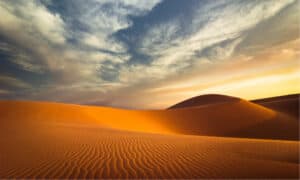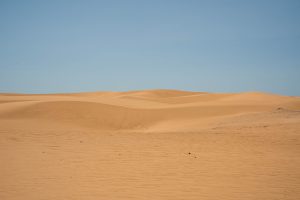Extreme temperatures make deserts stand out from the other habitats on Earth. Besides being some of the hottest places on earth, deserts can also be the coldest. Even hot deserts like the Sahara can get extremely cold after the sun goes down. Since deserts are so dry, the temperatures of the landscape change from extremely hot to cold more easily than in a place with more humidity.
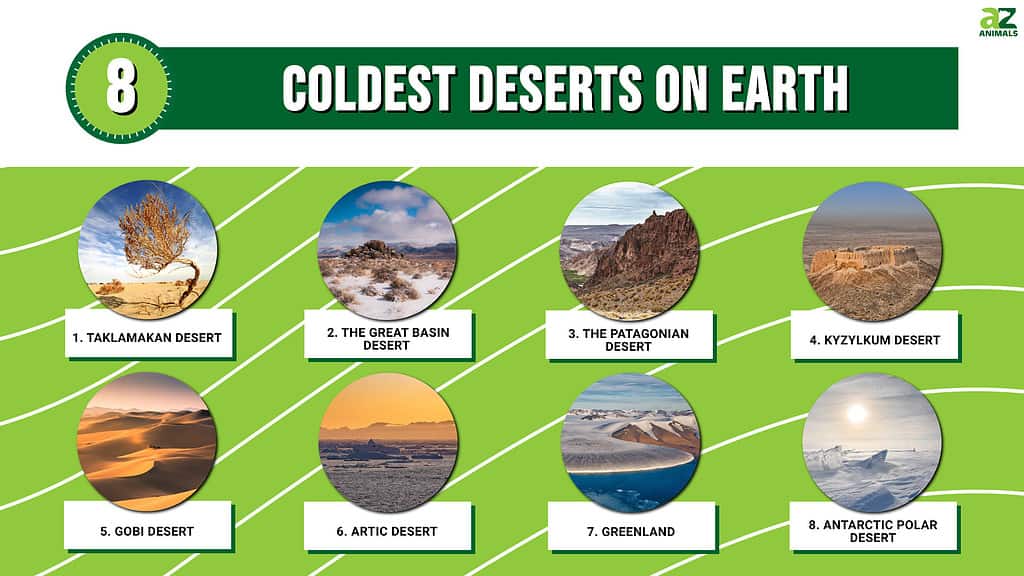
Out of the 8 coldest deserts, 2 are polar deserts and some of the coldest places in the world. That doesn’t mean some of the hottest deserts in the world can’t also reach record-low temperatures. In the winter, it is common for hot or cold deserts to freeze over. The coldest deserts of all remain freezing year-round and are inhabitable by humans. Let’s take a look at the 8 coldest deserts on Earth and the incredibly frigid temperatures they reach.
1. Taklamakan Desert
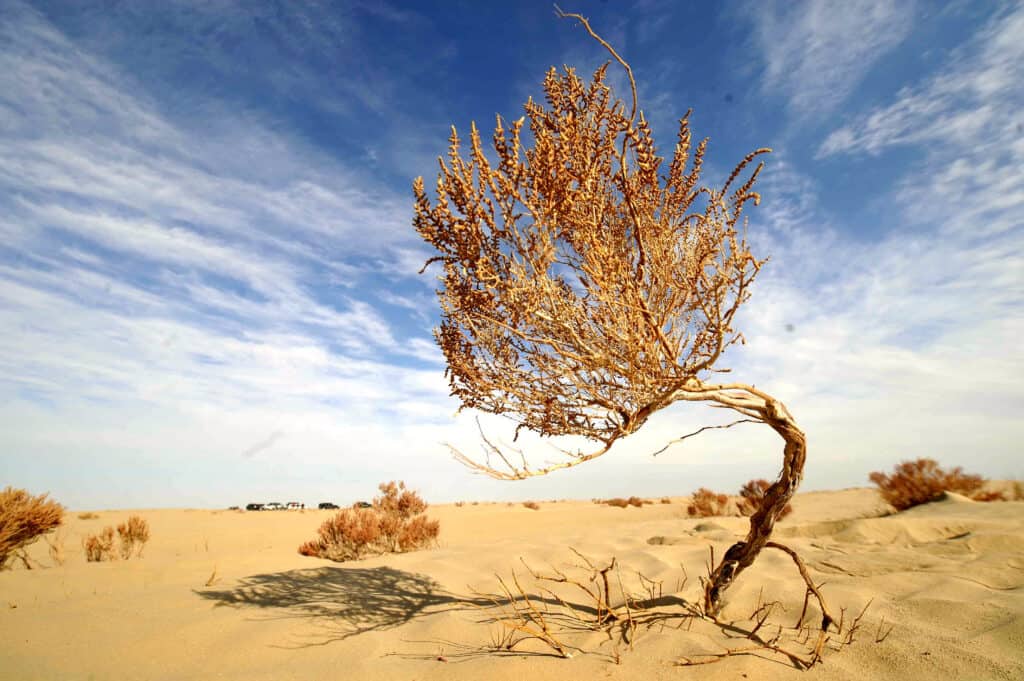
With an area of 130,000 square miles, the Taklamakan Desert is only slightly smaller than Germany.
©iStock.com/Hans Harms
| Location | Lowest Temperature | Size |
|---|---|---|
| China | -4 °F/-20 °C | 130,300 square miles |
Located in Northwest China is the Taklamakan Desert. Due to its location behind the Himalayan Mountains, this desert is extremely dry and has a cold desert climate. Because it is a rain shadow desert, it is extremely dry and has very little water making it nearly impossible to cross. With an area of 130,000 square miles, this desert is only slightly smaller than Germany.
Here temperatures can reach not only a high of 104°F but also a low of more than -4°F. Winter lasts about six months, and temperatures lower drastically when frigid air masses drift from Siberia. In 2008 the Taklamakan Desert was covered entirely in a thin blanket of snow, with recorded temperatures as low as -15°F.
2. The Great Basin Desert
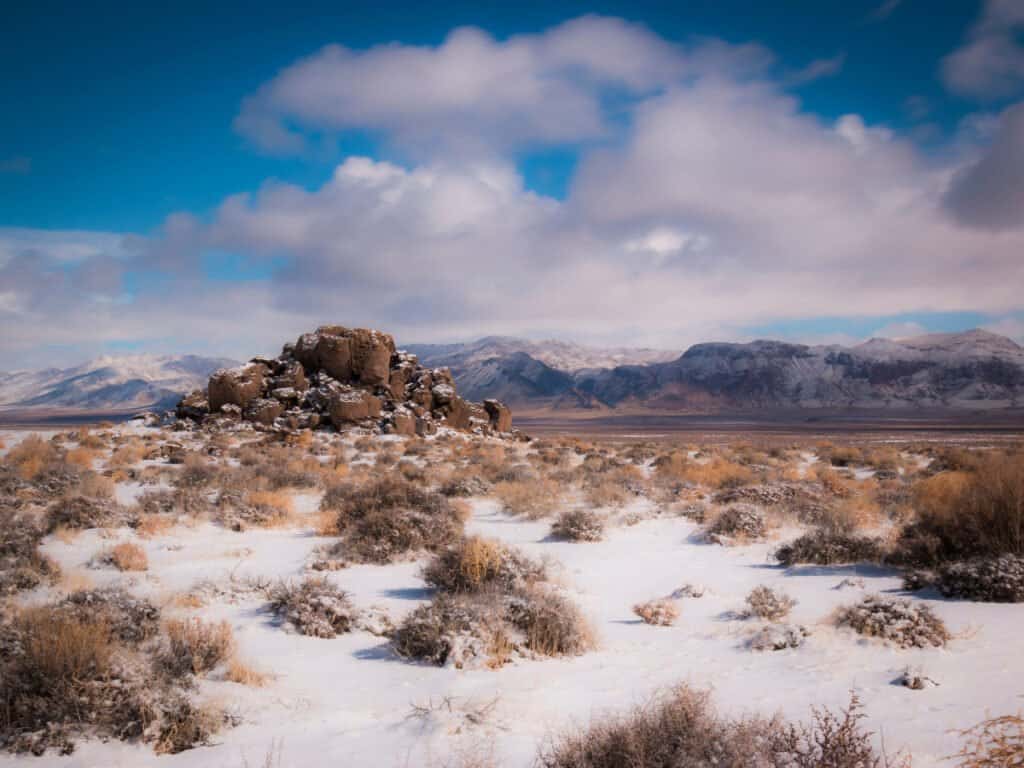
The Great Basin Desert houses the famous Bonneville Salt Flats, where movies are filmed and cars tested.
©Robert Stolting/Shutterstock.com
| Location | Lowest Temperature | Size |
|---|---|---|
| United States | -20 °F/-29 °C | 190,000 square miles |
With areas in more than four different states, the large Great Basin Desert is mostly found in Nevada and Utah. The climate here comprises very hot, dry summers and extremely cold snowy winters. Temperatures typically reach highs of over 90°F in summer and lows of -3°F in winter. This desert climate is due to the Sierra Nevada Mountain range casting a rain shadow over it.
The weather throughout the Great Basin Desert varies based on location, and there can be more than a 30 °F (17 °C) difference in temperature between valley floors and mountaintops. Moisture from the Pacific Ocean rarely makes its way to the desert and what little does find its way there tends to end up as rain or snow in the higher elevations of the mountains.
3. The Patagonian Desert
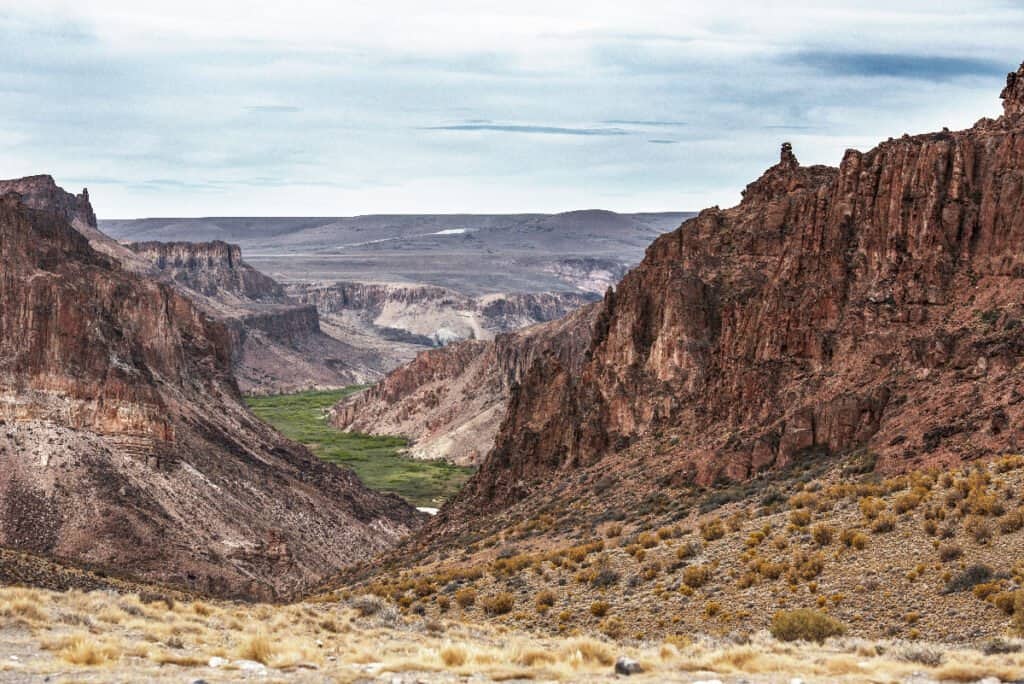
The Patagonian Desert is located in Argentina, and its weather comes from the mountains near it.
©Manu Iglesias/Shutterstock.com
| Location | Lowest Temperature | Size |
|---|---|---|
| Argentina | -29.02 °F/-33.9 °C | 260,000 square miles |
Also known as the Patagonian Steppe, the Patagonian Desert is the largest desert in Argentina and the 8th largest in the world. Bordered on the West by the Andes Mountains, this desert sits in a rainshadow, making it extremely dry. Due to the dry conditions, snow is rare though frost is not uncommon. The desert experiences seven months of winter and five months of summer with an average temperature of 37°F (3°C).
The Patagonian Desert may be incredibly frigid, but some plants and animals are still able to live in some regions. Most living things make their homes on the outskirts of the desert, where the environment is more hospitable. Animals like burrowing owls, Patagonian gray foxes, desert iguanas, and several species of eagle and hawk are the most commonly found animals in the Patagonian Desert.
4. Kyzylkum Desert

Most of the Kyzylkum Desert consists of plains that slope downwards to the northwest and large areas covered in dunes.
©Sergey Dzyuba/Shutterstock.com
| Location | Lowest Temperature | Size |
|---|---|---|
| Central Asia | -44 °F/-42 °C | 115,000 square miles |
The Kyzylkum Desert is divided between Kazakhstan, Turkmenistan, and Uzbekistan. It is the 15th largest desert in the world and one of the coldest. Most of the desert consists of plains that slope downwards to the northwest and large areas covered in dunes. Temperatures can reach extreme highs and lows with a maximum of 126°F (52 °C) during the summer.
This desert receives almost all its precipitation, about 4-8 inches, during the winter and spring. The rain and snow it does get are enough to support a variety of plant and animal life. Animals like karakul sheep, horses, camels, Russian tortoises, and desert monitors make their homes in the desert or use it as a pasture to graze on the desert foliage.
5. Gobi Desert
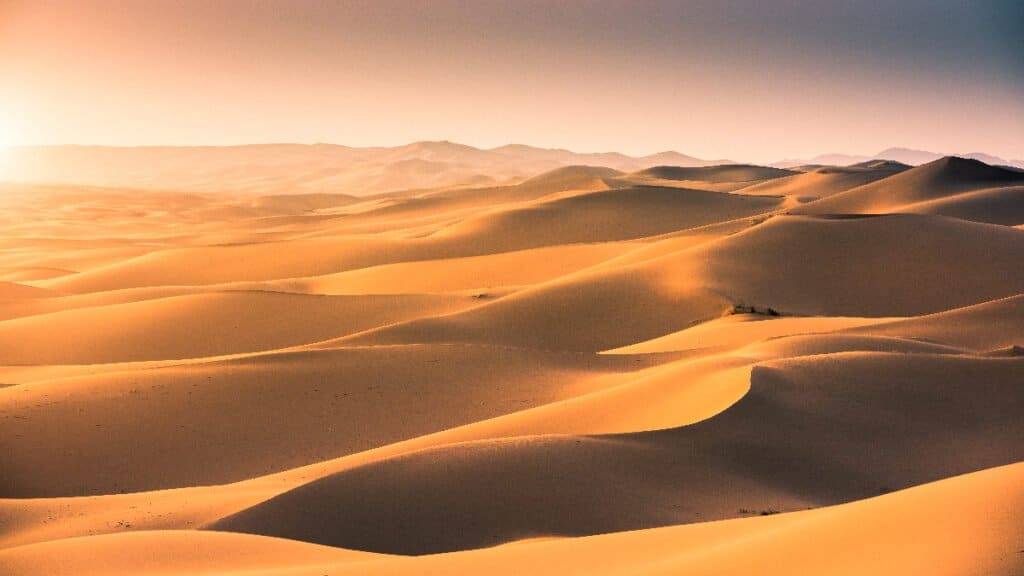
The Gobi Desert was once part of the famous Silk Road.
©mr.wijannarongk kunchit/Shutterstock.com
| Location | Lowest Temperature | Size |
|---|---|---|
| China/Mongolia | -40 °F/-40 °C | 500,000 square miles |
Not only is the Gobi Desert cold, but it’s also the sixth largest desert in the world. Frost and snowfall on the dunes found in this desert are not uncommon in the winter though most precipitation happens in the summer. Winds from the Siberian Steppes blow snow in the winter and greatly contribute to the extreme cold.
The Gobi desert has provided important fossil finds, including the first dinosaur eggs. Despite this region’s extreme temperatures and very little precipitation, many animals can live comfortably here. Species like wild camels, donkeys, gazelles, and occasionally wolves, snow leopards, and gobi bears are well adapted to the desert climate so they can thrive here.
6. Arctic Desert
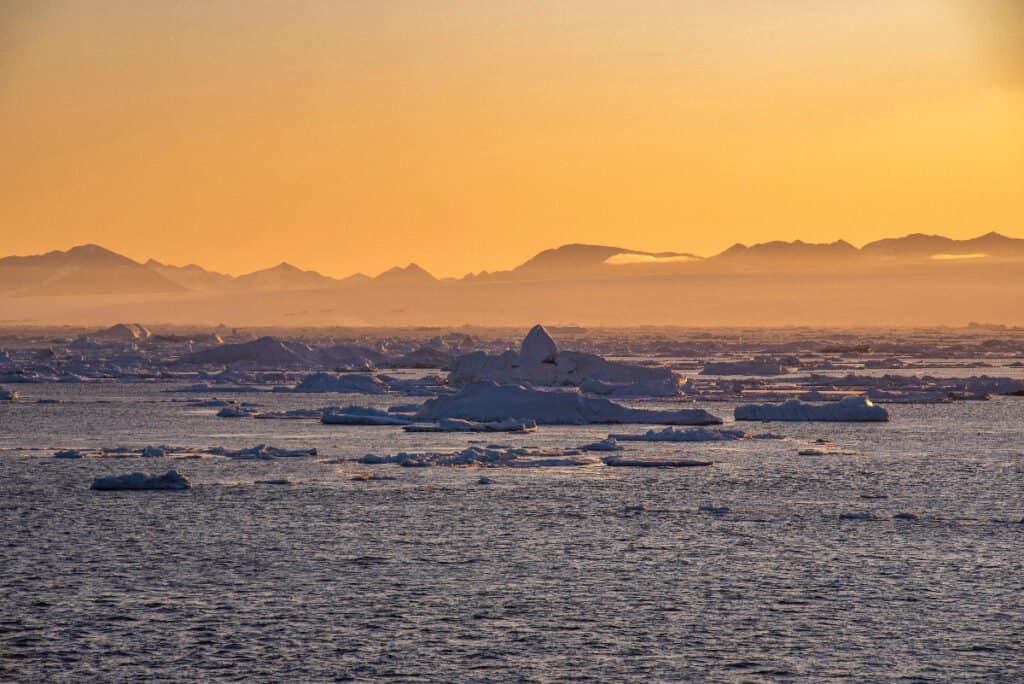
The Antarctic Desert has portions that are the driest overall.
©Olga Kysliuk/Shutterstock.com
| Location | Lowest Temperature | Size |
|---|---|---|
| Arctic Ocean | -89.9 °F/-67.7 °C | 62,300 square miles |
The Arctic Desert is a terrestrial ecoregion envelops the islands Novaya Zemlya, Franz Josef, and Severnaya Zemlya. This extremely cold desert is covered with snow and glaciers, and temperatures only rise above freezing for about a month or less during summer. Because this ecoregion is a tundra, most plant life cannot survive, though moss and lichen vegetation can be found in about 5-10% of the region.
The air in the Arctic Desert is so cold it cannot retain very much moisture, so snow and rain aren’t common. Though rainfall is scarce, snow melt does occur during the short summer period when temperatures rise to around 30°F (0°C). This allows the Arctic Desert to support colonies of sea birds and mammals like polar bears, walrus, and ivory gulls.
7. Greenland
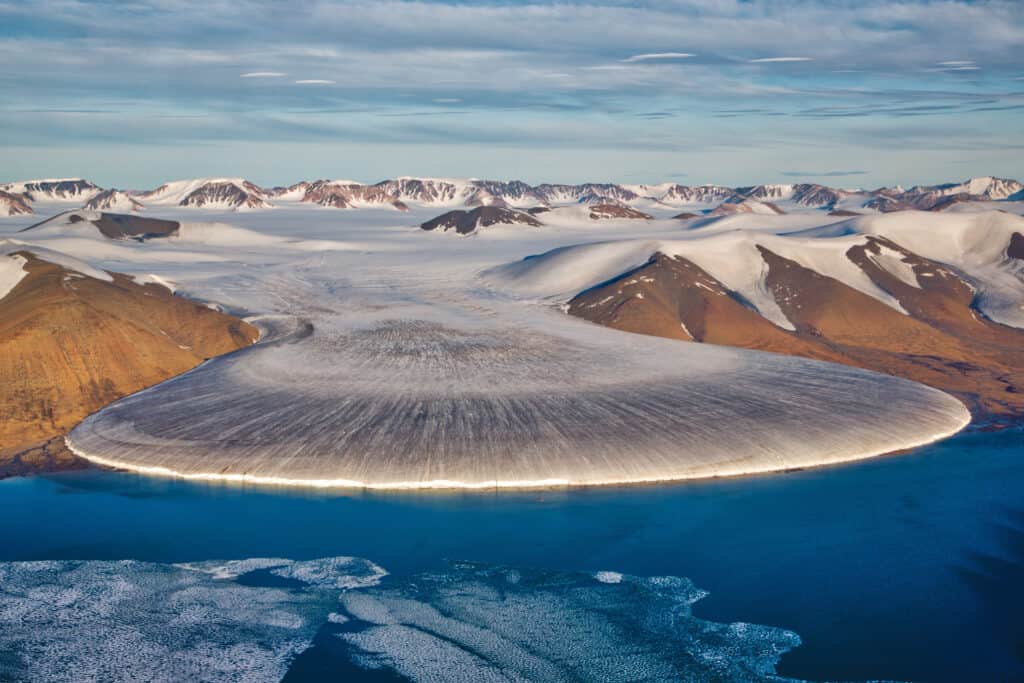
Northern Greenland’s precipitation is so low that it is considered a polar desert.
©Nicolaj Larsen/Shutterstock.com
| Location | Lowest Temperature | Size |
|---|---|---|
| Arctic/Atlantic Ocean | -93°F/-69°C | 836,300 square miles |
Greenland is an island country between the Arctic and the Atlantic Ocean and is the world’s largest non-continental island. Nearly 80% of this large island is covered in a vast body of ice called the Greenland ice sheet. Northern Greenland’s precipitation is so low that it is considered a polar desert. The northernmost region is completely free of ice; even during the ice age, it did not have glaciers.
Northern Greenland may be very cold and dry, but it is still home to many plant and animal species. Different species of carpet moss, flowers, and shrubs like dwarf willows, yellow poppies, and crowberries are all common plants. Animals like the polar bear, musk ox, caribou, and white arctic wolf can thrive and make their home in northern Greenland.
8. Antarctic Polar Desert
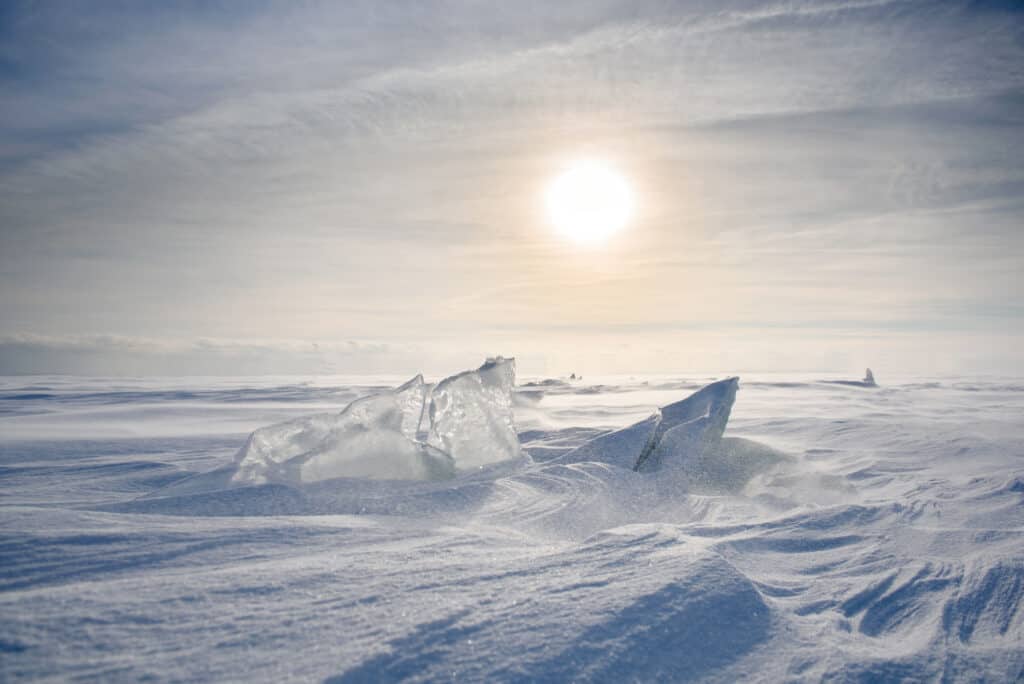
The Antarctic Polar Desert spans the entirety of Antarctica and is the coldest place on earth.
©river34/Shutterstock.com
| Location | Lowest Temperature | Size |
|---|---|---|
| Antarctica | -128.2°F / -89°C | 5.2 million square miles |
Antarctica is an extremely large landmass containing the south pole, the fifth largest continent and almost twice the size of Australia. The Antarctic Polar Desert spans the entirety of Antarctica and is the coldest place on earth. It does not receive a lot of snow or rain, but when it does, the snow or ice does not melt and continues to build up over the years. This build-up turns into ice sheets, and the Antarctic ice sheet covers most of Antarctica.
The average temperature in Antarctica is -70°F (-57 °C), so humans cannot live there for long periods. The only plants able to survive the extreme temperature of Antarctica are moss and algae. Animals that can live in these harsh conditions include fur seals, gentoo penguins, Adelie penguins, and Antarctic orcas.
Summary Of The 8 Coldest Deserts On Earth
| Rank | Desert | Location |
|---|---|---|
| 1 | Taklamakan Desert | China |
| 2 | The Great Desert Basin | United States |
| 3 | The Patagonian Desert | Argentina |
| 4 | Kyzylkum Desert | Central Asia |
| 5 | Gobi Desert | China/Mongolia |
| 6 | Arctic Desert | Arctic Ocean |
| 7 | Greenland | Greenland |
| 8 | Antarctic Polar Desert | Antarctica |
The photo featured at the top of this post is © mr.wijannarongk kunchit/Shutterstock.com
Sources
- Live Science, Available here: https://www.livescience.com/why-do-deserts-get-cold-at-night.html
- ENCYCLOPÆDIA IRANICA FOUNDATION, Available here: https://www.iranicaonline.org/articles/taklamakan
- Cooperative Institute for Research in Environmental Sciences, Available here: https://cires.colorado.edu/news/new-study-explains-antarctica%E2%80%99s-coldest-temperatures
Thank you for reading! Have some feedback for us? Contact the AZ Animals editorial team.




